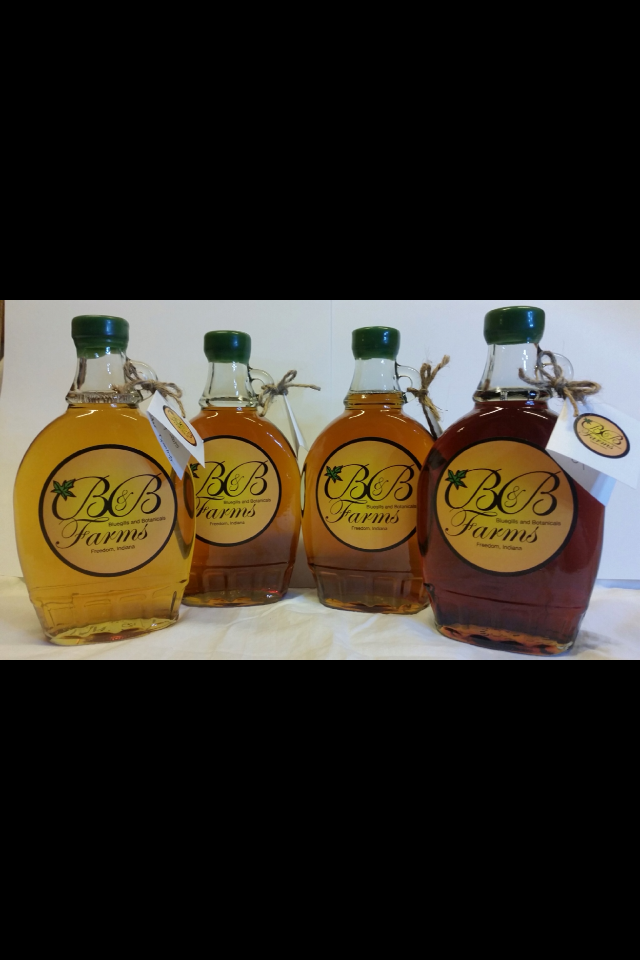This shot illustrates how syrup can appear very different from batch to batch. Big producers may blend their product to assure uniformity in taste and appearance, but the small scale operation can choose to showcase each batch, and celebrate its distinctiveness.
The bottle on the left is from our first run, and is light amber. The bottle on the far right is dark amber, bottled today. There's a couple bottles of medium in between.
Light coloration usually gives you a very sweet taste, with a subtle maple flavor. The darker the syrup, the more pronounced the maple flavoring becomes, but it's not quite as sweet. Usually, anyway.
Nature holds most of the cards where color and sweetness are concerned, but there are subtle tweaks a sugarmaker can do to try and tip the balance one way or the other. Aging the sap, to allow the yeast to consume more of the sugars will usually yield darker syrup, as will an extended cooking process.
The syrup market out east prefers a light amber product, and darker syrup is frowned upon for that reason. But many who try maple syrup, REAL maple syrup, enjoy the taste of the darker stuff. Me included.
A quality medium grade, offers a fair compromise.
